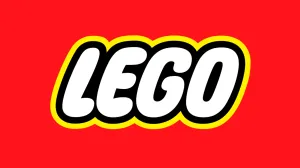
Superhero comics writ large are power fantasies. This is especially true in the realm of DC Comics. During the day Superman, The Flash, and Green Lantern might work as a journalist, crime lab technician, or test pilot, but they never cease being gods. There is never a moment in which most of these figures are truly helpless. That is not the case for Jimmy Olsen. He has been defined by his relationship to power, as “Superman’s best pal,” since he first received his own stories. This is the understanding brought to Superman’s Pal Jimmy Olsen #1 that allows it to transcend the modern superhero genre and deliver a true, blue collar take on the DC Comics universe.
Videos by ComicBook.com
That description might imply Jimmy Olsen is a far more serious or purely cerebral affair than is the case. Yes, it is a smart comic, but that never divorces it from being a comical and pleasing series of stories. This introduction embraces the absurdity and joy which made Curt Swan’s work on Superman and Action Comics resonate. It is a world in which anything can happen, whether that is a turtle-boy falling from space or trans-dimensional thieves appearing in Gorilla City. The essential difference is that it takes the perspective of an everyday working man. This working man just happens to have access to the power structures that define this absurdly heightened version of our own world.

Writer Matt Fraction and artist Steve Lieber frame their story using familiar tropes from the Silver Age of Superman comics. Jimmy Olsen #1 is subdivided into four distinct stories, all of which build a larger narrative. Every segment begins with a brief introductory monologue followed by an Olsen’s name and title for that chapter. It’s the sort of schtick that could quickly become tiresome if forced, but the narration is written to be both self-aware and additive. The excited tone of the narrator reinforces genre elements, while sliding in less cheery elements of this world. It’s the juxtaposition of harsh realities against the fantastical skylines and events of each section that enhances the pure joys of a farce into a more substantial commentary.
The opening pair of pages leap backwards in time to examine a pair of Jimmy Olsen and Lex Luthor’s ancestors, renamed Olsson and Luthais. Their brief interaction lays the groundwork for the ways in which power continues to work upon a city like Metropolis, with or without the word “super” in front of it. It asserts that these modern men are not individuals pulled from thin air, but a result of history, tied to systems and injustices that replicate themselves. Olsens, née Olssons, have always been the low man on a totem pole, idealists who strove for a fair and just new metropolis named Metropolis. And there have always been those who would do whatever it takes to bury those dreams. In spite of its call to greater meaning, the sequence also ends with a killer punchline, one that left this reviewer doubled over before proceeding to page three.

The significance of this tonal ballet, delivering high action one moment, two-panel gags in the next, and a dash of darkness in between, cannot be understated. It is a balancing act that allows Jimmy Olsen #1 to be a truly joyful reading experience throughout, without ever sacrificing an awareness of the fictional and real histories surrounding it. That dance is something artist Steve Lieber has excelled at throughout his career, and his mastery over the comics form is on full display here, wonderfully enhanced by colorist Nathan Fairbairn’s impeccable palettes.
There are entire pages where Lieber and Fraction never go a single panel without delivering a new joke. The focus shifts from close up reactions emphasizing a punchline or pause to splash panels that deliver more expressive body humor or irony through a vast setting. There is an excellent example of this pirouetting in the final chapter of Jimmy Olsen #1. A relentless series of verbal and visual gags gives way to a sweeping cityscape, something so detailed and well-considered that it reads as an instantly iconic take on a well-known DC Comics locale. Even without a single obvious indicator, Lieber’s design of the city and Fairbairn’s construction of atmosphere make it obvious exactly where Jimmy is in this moment. And in that turn there is both a lingering element of humor along with an increased sense of gravitas. This pivots perfectly to the first cliffhanger of the series, one that both delights and thrills.

That cliffhanger also provides a perfect example of how much thought is being placed into the jokes and themes of Jimmy Olsen, as well. Be sure to suss out headlines on copies of the Daily Planet as they clarify the aims of this story. There are gags embedded in backgrounds throughout this issue, many of which both serve up a laugh and some new insight. Many of the best samples of writing are not about a criticism of commerce and power or a well-delivered one liner, they are both. You might catch yourself laughing because Luthor’s interactions with various Olsens is genuinely humorous and surprisingly close to our much more grounded version of reality. It is in this fashion that the serious regularly moves from being simply clever to comedically transcendent.
Jimmy Olsen #1 is the rare superhero comic that not only acknowledges the immense potential of its medium, but throws a lasso around its neck and leaps onto its back to see how far it can be ridden. The craftsmanship on display from all creative parties is impeccable and their ambition is only grounded by the issues embedded in its narrative. It is capable of launching a turtle-boy through space and commenting on urban tourism, without those goals ever feeling in conflict. All of this allows it to tell a story that is simultaneously perfectly at home in Metropolis, while offering a new and resonant perspective on everyday power. Jimmy Olsen persists as an everyman unwilling to sit on the sidelines; that’s what makes this comic truly super.
Rating: 5 out of 5
Published by DC Comics
On July 17, 2019
Written by Matt Fraction
Art by Steve Lieber
Colors by Nathan Fairbairn
Letters by Clayton Cowles
Cover by Steve Lieber and Nathan Fairbairn








